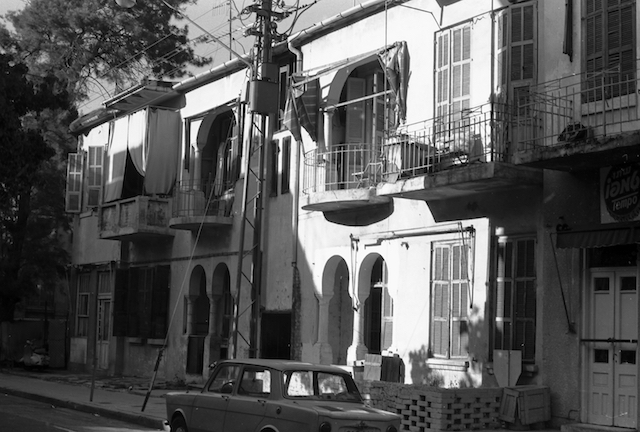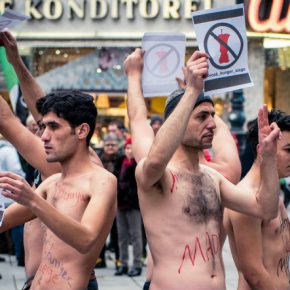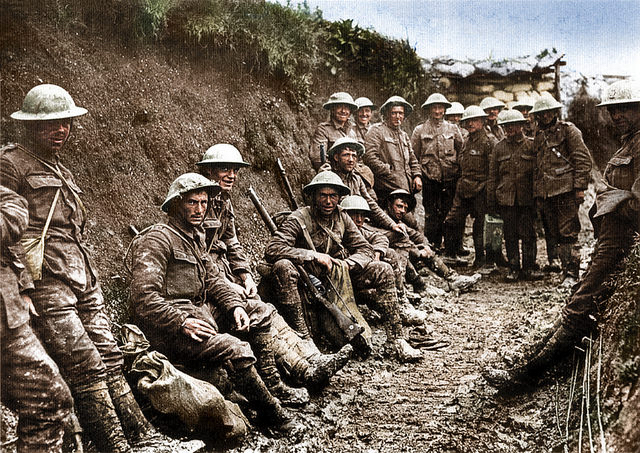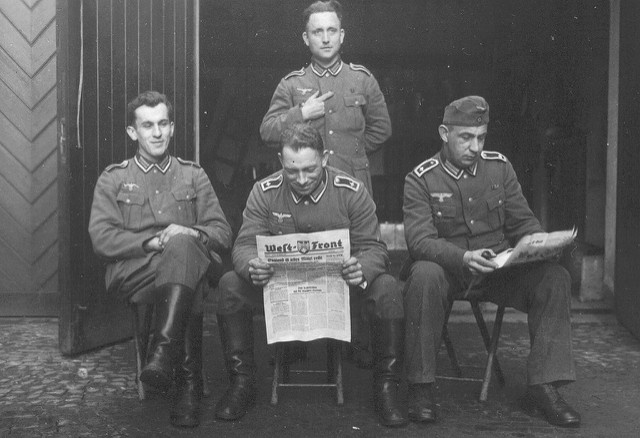There was no real living room in our no. 14 Nahmani home. On the left side of the dining room with its round table, buffet and gramophone, there was the master bedroom. On its right, a wide folding door opened to father’s study. There was, however, a comfortably sized balcony, overlooking the garden. It stretched along the dining room with its large windows on either side of a glass paneled double door, letting in a great deal of light.
The balcony was fenced by a row of curved pillars in the popular classic style, creating a surface for my much-admired collection of small cactus plants. On the left-hand corner of the balcony stood a thriving potted gum tree. The remaining area allowed for the appropriate furniture – a wicker table and a couple of wicker armchairs, a striped canvas deck chair and enough room for additional chairs and stools.
The balcony offered all kinds of diversions. It was the most suitable place to play snakes and ladders with Onkel Franz who later taught me to play Rummy. Another pastime was a shouting match with the children on the third floor of the house next door.
One typical episode concerned our mothers’ ages, and the older the more distinguished, of course. It began with “my mother is twenty’ and ‘my mother is forty”. It didn’t take long before both our mothers ages rose to one and two hundred.
When the stars came out on a summer’s night, father sometimes took me to the balcony. That, he explained, pointing out the constellation of stars in the sky, is the Cassiopeia; and look, he then went on, that is the Great Bear. I listened, enchanted. There was magic in the silent, vast blue darkness of the night when father spoke.
The balcony was where the manicurist found it most convenient to do mother’s nails every Thursday morning. Once her nails were shaped, polished and needed to dry, mother waved her freshly manicured fingers, laughing as she announced with a theatrical gesture the imagined arrival of guests. “Geste kommen!” “Geste kommen!”
The sound of shifted wicker furniture was the sound of father rising from one of these armchairs after reading his morning paper. There were, of course, other reasons for father to leave the balcony. The discovery in the newspaper of a new Hebrew word sent father to his study for his dictionary. I remember clearly the way he pronounced his discovery, memorizing it. Teguvah! Teguvah!
The new word meant “reaction”.

I have no record of father’s first Hebrew lessons. There are, however, letters he wrote to mother during or after World War I, taking some hilarious liberties with Hebrew, mainly by literally translating from the German. But that was long ago, long before he passed both Hebrew and English language exams in Jerusalem for his license to practice law in Palestine. Long before he came to my aid when I prepared for my Hebrew grammar exam at school.
It must have been before 1920, that he met in Berlin a Mr. Lubman from Rishon Le Zion who agreed to give him some Hebrew lessons. In an antiquarian and second-hand library, father came across a volume of Bialik poetry. He was intrigued. For his next lesson, he asked his teacher to help him translate a poem of his choice into German. It went so well that father forgot all about his Hebrew lessons and with the help of Mr. Lubman translated 32 Bialik poems into German.
The poems of Hayyim Nachman Bialik were published in 1920 by the Berlin’s Welt-Verlag, translated by Louis Weinberg, my father.
The room where father received his clients and visitors was a comfortable, pleasant sitting room. By the window overlooking the garden stood a divan covered with a large kilim rug. A gilded Damascus copper plate with calligraphic Arabic inscriptions rested on mother of pearl inlaid legs. It served as a coffee table with round copper plate ashtrays for guests and stood in the center of the carpeted room. Two simple black wooden armchairs with canvass backs and seats rested on either side of the Damascus coffee table
***
There were four plain black bookcases, packed with classic German literature, prose and poetry, illustrated history books, the Encyclopedia Britannica, the German Brockhaus and various dictionaries. All four bookcases, as well as both armchairs, father made with the assistance of the mad carpenter who claimed to be mayor of Tel Aviv and called himself Dizengoff.
One day, a black bakelite telephone was installed on top of a bookcase, out of reach for small children. It was no use. I was determined to make a phone call, the way the grown-ups did. So I climbed on a chair, picked up the phone and asked the operator for a number, much to the horror and amusement of the grown-ups who turned up in time. …
Even before I was able to read, I asked father permission to look at his illustrated books. I remember sitting on the floor and picking out books with pictures.

There were books with prints and engravings of soldiers and kings, authors, painters and sculptors as well as some very uninteresting pictures of buildings. All black and white. Once I was able to read I picked up a small black volume in Hebrew. It was a copy of the New Testament. The first page of St. Matthew began with an endless list of names, so I gave up reading the rest of it.
A corridor which ran from the front door to the bathroom divided the apartment into a Right Bank and a Left Bank. The Right Bank consisted of the study, dining room, master bedroom and balcony and overlooked Nahmani street, whereas the remaining rooms, such as the kitchen opened to the back terrace and another garden area. A small dark passage on the left of the front door provided a wardrobe for guests which led to a small bedroom under the staircase to the second floor. It was Yemima’s room. Yemima was mother’s live-in domestic help, our ozeret. Her room had a separate entrance from the kitchen terrace.
Yemima was a rather buxom Yemenite girl, very pretty with curly black hair. What sticks in my mind, after so many years, is her cheerful disposition, the sound of her laughter. Yemima had a boyfriend. A hairdresser. His pomaded wavy hair was a shiny black. One day, mother found Yemima and her hairdresser boyfriend in bed together. That was the sort of thing mother would not tolerate. Yemima had to go.
The next room along the corridor was the office, fitted with filing cabinet and Kappel typewriter. It was a long and narrow room with a large window, where Holzer, father’s secretary, worked. Holzer was surely the ugliest man on Nahmani street if not in Tel Aviv. His hunchback protruded in a sharp forward angle. His huge nose with its large nostrils projected in a similar sharp forward angle, and he spoke with a nasal lisp. Holzer lived in a house on Montefiore street, right behind ours. When father needed him on some special job, all he had to do was to call : Holzer! Holzer! and Holzer, who was surprisingly agile, came.
The now historic Kappel was the machine on which father typed his poetry, translations of the better part of now classical modern Hebrew poetry, his letters, his researched story of the Warsaw Ghetto and his novel in letters to “my daughter Hannah”. And so much else. It stood on a small desk by the window of that long narrow room between the wardrobe and the kitchen.
Father, who never seemed to have either bought or had a new suit made, used the same old Kappel for almost his entire life. He handled that unwieldy machine with care, covering it every night with a special wooden hood. Father spent many years of his life at his venerated Kappel, and once busy writing he was deaf to the world.
Photographs courtesy of Danny Shik. All rights reserved.





